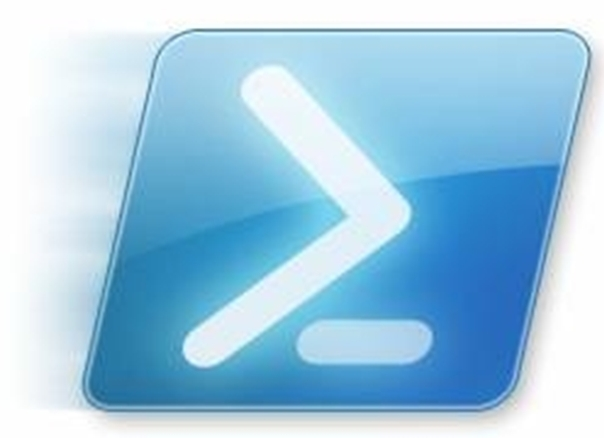Windows
 Written by Sam McGeown
on 7/2/2012
Written by Sam McGeown
on 7/2/2012
This is every file server admin’s nightmare: hundreds of shares, thousands of folders, hundreds of thousands of files - and custom or not inherited rights on many of them. Terabytes of data that need auditing - e.g. to find customer data, or credit card information. How do you go about accessing all the data in all the trees? What about backups failing because someone removed the System account? Of course you can seize control of the folder by taking ownership and pushing down from a top level - but how do you preserve the existing Access Control Lists?
 Written by Sam McGeown
on 13/7/2011
Written by Sam McGeown
on 13/7/2011 OTRS is an exceptionally flexible ITIL compliant ticketing/helpdesk solution, which runs beautifully on almost any LAMP (Linux, Apache, MySQL, Perl (yes, I know it’s PHP really;-)) server, but what happens when you work in a Windows-only environment? OTRS does have a Windows installer, but it is somewhat clunky and requires almost as much work to configure as manually installing. Installing as components allows you to upgrade portions of the system and have more granular control over the setup.
OTRS is an exceptionally flexible ITIL compliant ticketing/helpdesk solution, which runs beautifully on almost any LAMP (Linux, Apache, MySQL, Perl (yes, I know it’s PHP really;-)) server, but what happens when you work in a Windows-only environment? OTRS does have a Windows installer, but it is somewhat clunky and requires almost as much work to configure as manually installing. Installing as components allows you to upgrade portions of the system and have more granular control over the setup.
 Written by Sam McGeown
on 13/8/2010
Written by Sam McGeown
on 13/8/2010The NT Testing TCP Tool is a handy little tool for testing the throughput between two servers – and it’s free! It’s available to download here:
First, you need to install the MSI on both ends – for the sake of this, say SERVER1 and SERVER2. Once you’ve installed it on the server, navigate to \Program Files\Microsoft Corporation\NT Testing TCP Tool, you should see a few copies of the tool for different architectures. Locate the correct .exe for you architecture and rename it to ntttcps.exe. Copy this and rename it to ntttcpr.exe – these form the sender and receiver parts of the tool.
 Written by Sam McGeown
on 2/6/2010
Written by Sam McGeown
on 2/6/2010If you have a Windows Server 2008 box in a workgroup that you require access to one of the admin shares, it can be a little more complicated than with Server 2003. In my case, we had a SQL server on the back end which was trying to access the web server in the DMZ using PSExec.exe to remotely run a process. Executing PSExec and passing the correct credentials failed with “Access is Denied”.
 Written by Sam McGeown
on 1/4/2010
Written by Sam McGeown
on 1/4/2010If you install Reporting Services on Windows Server 2008 (RTM or R2) and attempt to verify the installation by opening the
The permissions granted to user ‘MCGEOWN\Sam.McGeown’ are insufficient for performing this operation. (rsAccessDenied) Get Online Help
SQL Server Reporting Services
Additionally, you may be able to access the
 Written by Sam McGeown
on 29/3/2010
Written by Sam McGeown
on 29/3/2010I logged onto a production domain controller this morning and checked the event logs to be confronted with this:
Event ID 1030 and 1058 every 5 minutes, looking into the detail for these events I can see its a replication issue for one of the GPOs.
For more information, see Help and Support Center at
 Written by Sam McGeown
on 24/3/2010
Written by Sam McGeown
on 24/3/2010So, you’ve installed a new server with Server 2008 R2 Core – what next? Logging on, you’re presented with a shiny command prompt, you can run notepad or regedit…but aside from that, where do you go from there? In the next few series of posts I’ll hopefully point out the basics, and some not so basics!
In this post, I’m covering Installing the IIS web server (and a few useful bits) and managing it from the IIS Management Snap-in.
 Written by Sam McGeown
on 24/3/2010
Written by Sam McGeown
on 24/3/2010So, you’ve installed a new server with Server 2008 R2 Core – what next? Logging on, you’re presented with a shiny command prompt, you can run notepad or regedit…but aside from that, where do you go from there? In the next few series of posts I’ll hopefully point out the basics, and some not so basics!
I’m going to look at some management tasks – the bread and butter of being a Windows admin.
 Written by Sam McGeown
on 24/3/2010
Written by Sam McGeown
on 24/3/2010So, you’ve installed a new server with Server 2008 R2 Core – what next? Logging on, you’re presented with a shiny command prompt, you can run notepad or regedit…but aside from that, where do you go from there? In the next few series of posts I’ll hopefully point out the basics, and some not so basics!
Using the Server Configuration Tool
The server configuration tool (sconfig.cmd) is provided in R2 for some of the basic setup tasks, so you can run that by issuing the “sconfig” command. Out of the box, it looks something like this:
 Written by Sam McGeown
on 23/3/2010
Written by Sam McGeown
on 23/3/2010I’m pleased to say that yesterday I took and passed two Microsoft Certified IT Professional exams, the Server Administrator (70-646) and the Enterprise Administrator (70-647). Hopefully I can take a bit of a break from study and write a few more technical posts here now!
